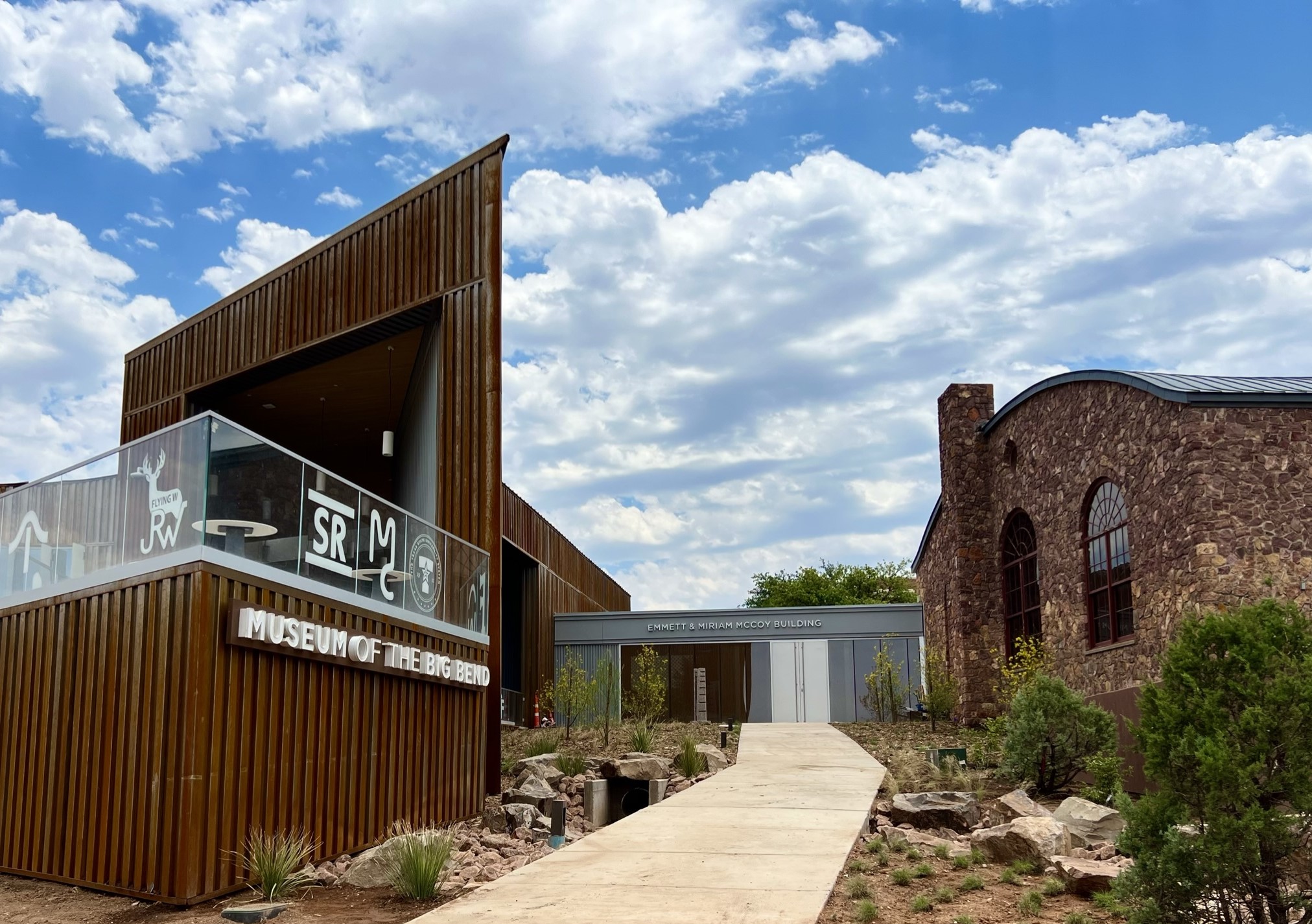
The recently renovated Museum of the Big Bend in Alpine. Photo by Rebekah Antrosio/courtesy Museum of the Big Bend
Step onto the patio that juts from the recently opened expansion of the Museum of the Big Bend in Alpine, and the spiny ridgeline of the Davis Mountains rises in the distance.
From afar, the desert and mountains look dusty and desolate, like a rippling expanse of old carpet bunched up in some places and beaten flat in others. But that prickly landscape has stories to tell—and the museum’s new 10,000-square-foot Emmett and Miriam McCoy Building does just that. When the $11 million expansion opened on the campus of Sul Ross State University this summer, it doubled the size of the original museum, which opened in 1937. It also added a new focus: art.
The original museum, constructed of brownish-red stone, serves as the perfect welcome mat to the Big Bend region. Visitors can gaze at a replica of a flying dinosaur with a 36-foot wingspan, learn about stone points made by Native Americans who lived here, or peer inside a stagecoach. They can even see a smudged cowboy hat worn by Dan Blocker, who played Hoss in the TV series Bonanza.
But the expansion does something more. It takes the iconic landscape of far West Texas and shows visitors how early Texas artists interpreted it.
Visit the Museum of the Big Bend
The museum is located on the Sul Ross State University campus in Alpine. More info here.
Open: Tues-Sat 4-10 p.m.
Current exhibit
Andy Warhol: Cowboys and Indians
Feb. 16-May 4
See American pop culture artist Andy Warhol’s depictions of the American West, including portraits of figures like actor John Wayne, sharpshooter Annie Oakley, and President Teddy Roosevelt.
Construction on the expansion began in August 2021. Larry Speck, a professor at the University of Texas School of Architecture and principal in the architecture firm Page Southerland Page, designed the angular structure with a weathered steel shell. It’s named for the family that founded McCoy’s Building Supply. Miriam McCoy, who died June 14, just before the expansion opened, donated $5 million to the project.
A mural of Mitre Peak by late San Antonio artist Julius Woeltz hangs in the entryway. In the early 1930s, Sul Ross Teachers College, its name at the time, hired Woeltz as head of the art department. He teamed up with San Antonio artist Xavier Gonzalez to start a summer art camp that was open to both students and the public.
“The president [of the university] was open to any way to promote the university and get people here,” museum director Mary Bones says. “Some of the best early Texas artists came here to teach.”
Woeltz and Gonzalez left in the ’30s, but the summer art program continued until 1950. Artists Otis Dozier, Harry Anthony DeYoung, and William Lester all taught at the camp, which focused on plein-air painting, or painting done outside. Students roamed the Big Bend region, practicing their craft in places like Santa Elena Canyon.
The expansion includes paintings by El Paso artist Tom Lea, on long-term loan from the Dallas Museum of Art, that depict the early cattle industry in the United States. It also includes works by Fred Darge, a German immigrant who painted scenes from ranches on land that is now encompassed by the national park.
“He knew that way of life was coming to an end, and he was there to document it,” Bones says.
Besides the permanent exhibits, the museum will feature four rotating temporary exhibits each year.
“We had such a small exhibit space,” Bones says. “We’re going to be able to bring in the next level of exhibit for visitors. This is a great museum; we’re going to make it even better.”








